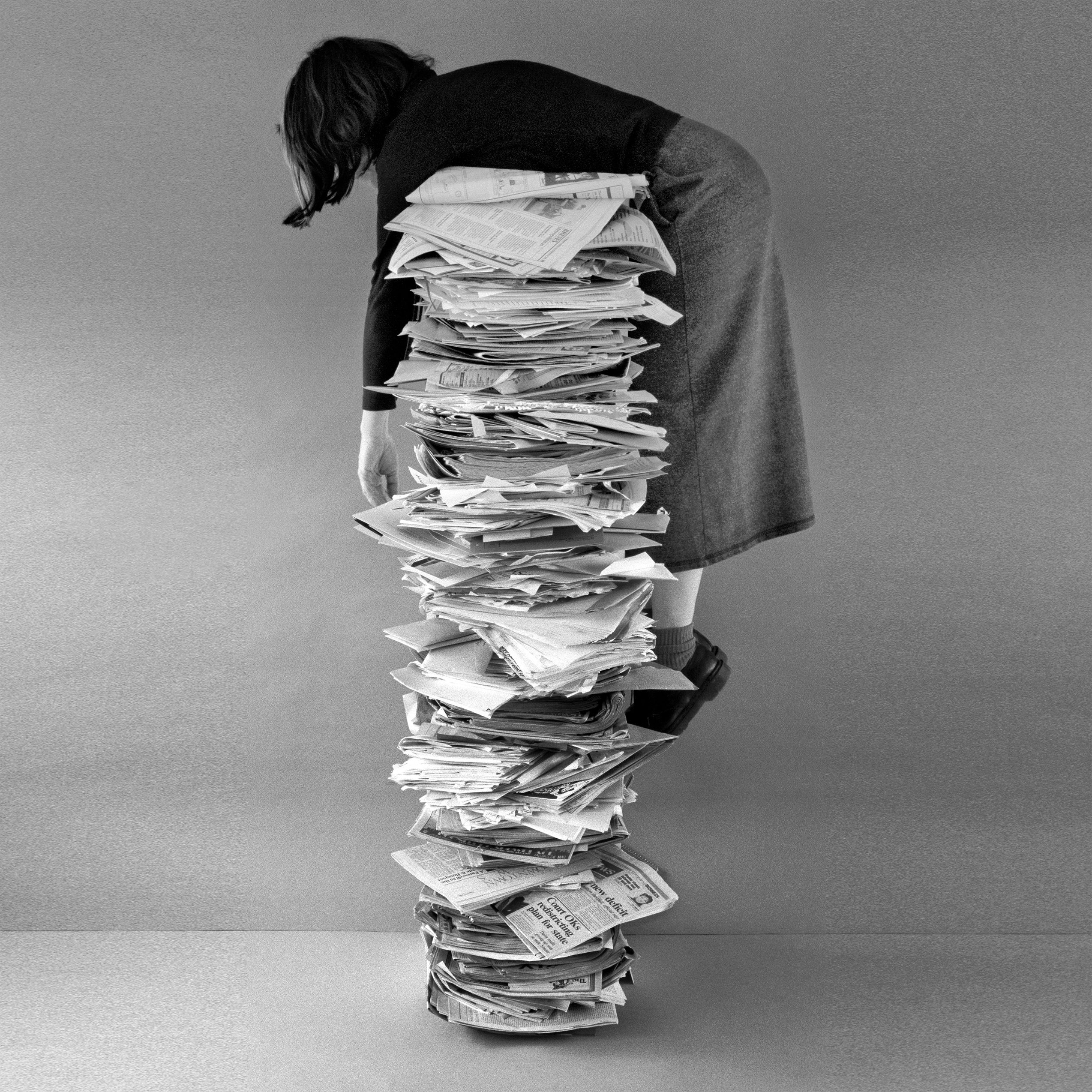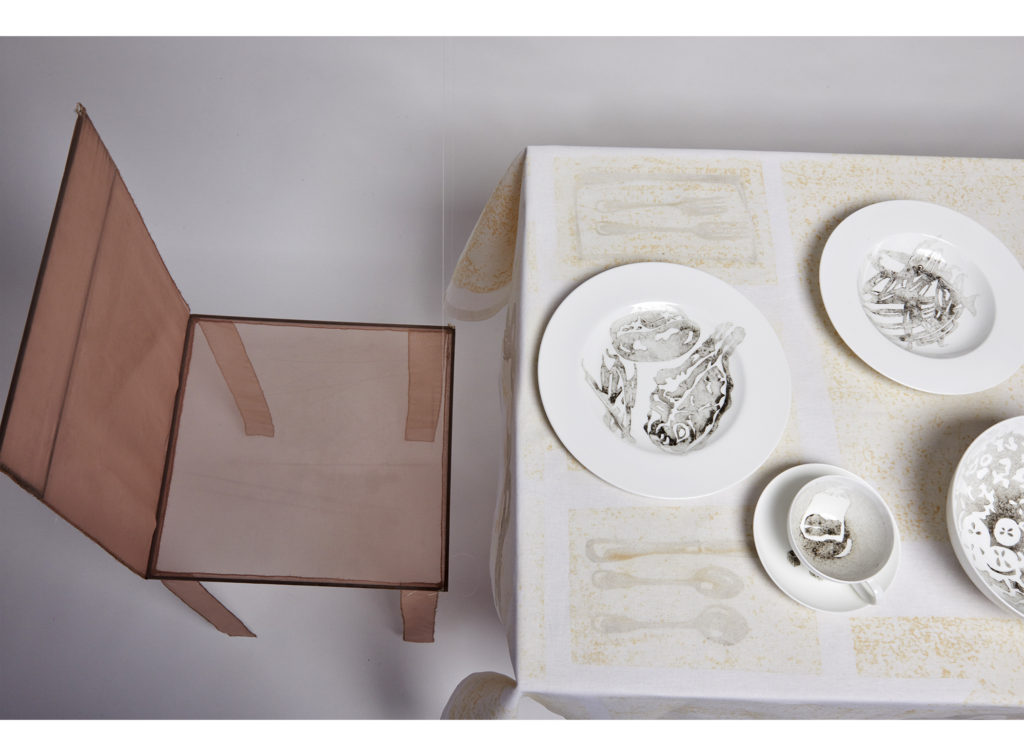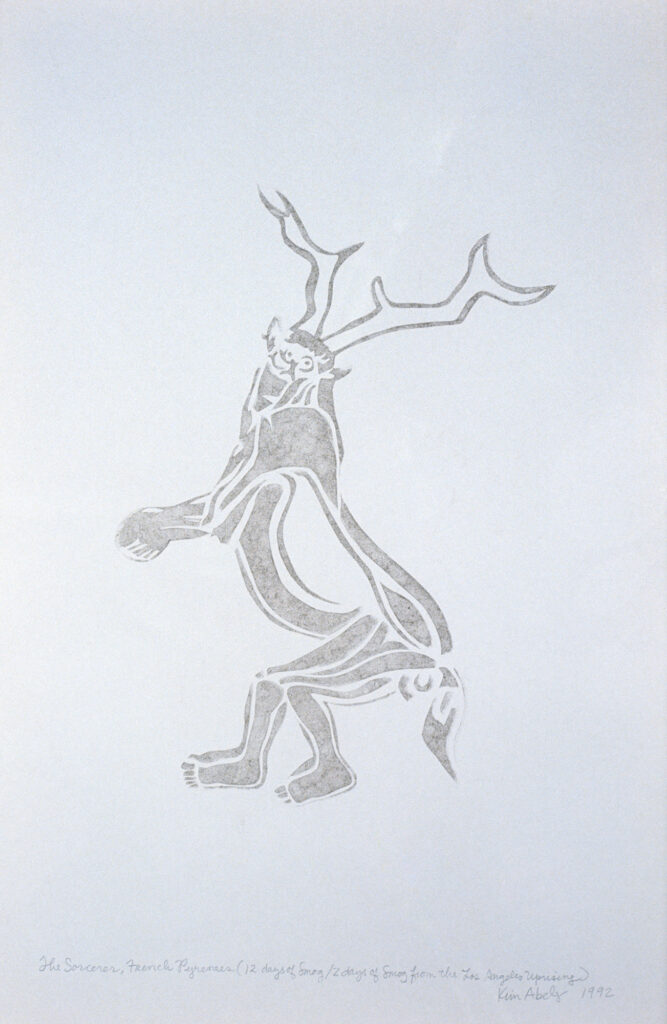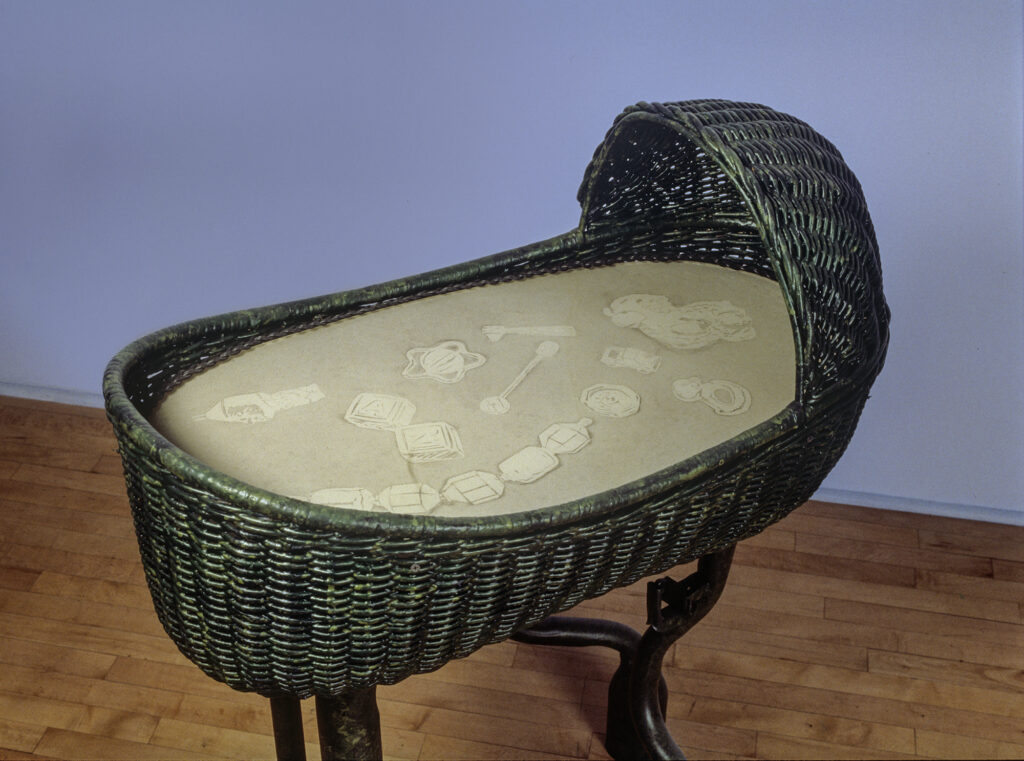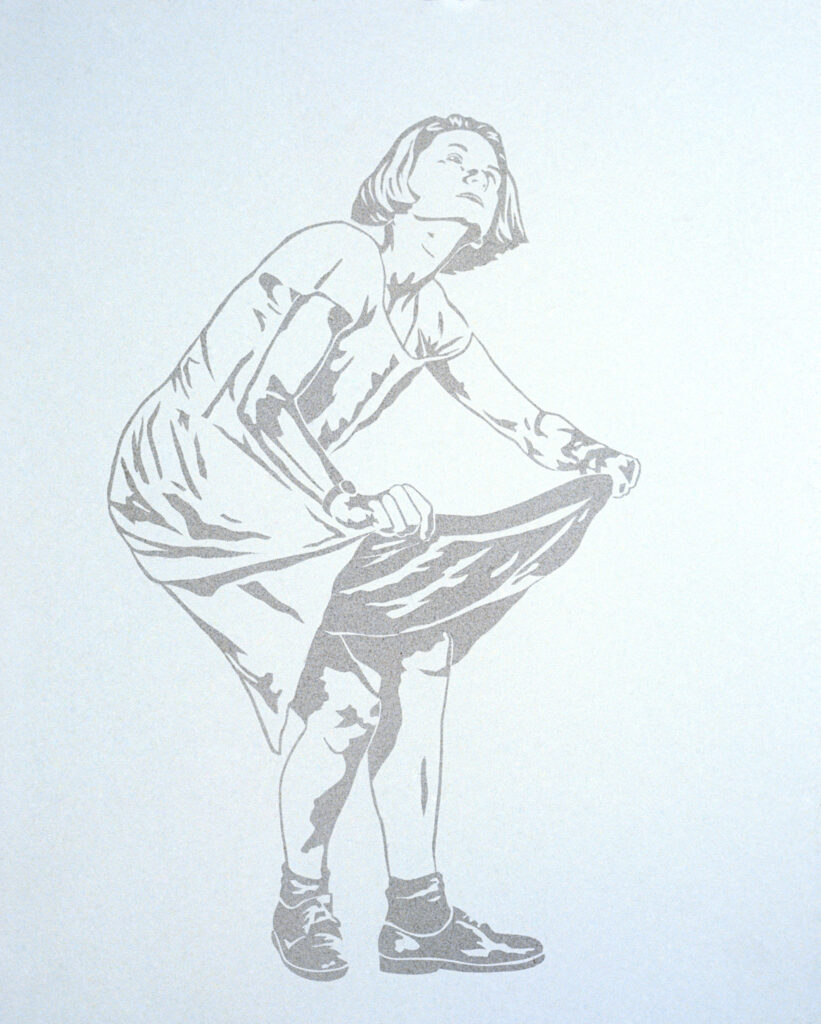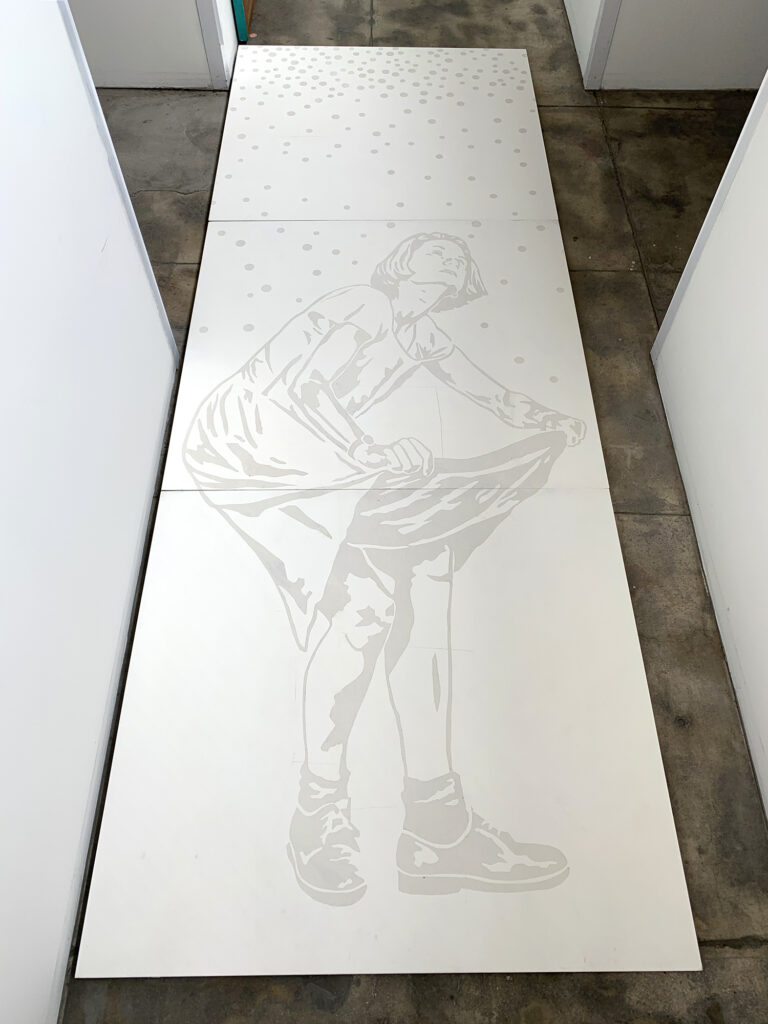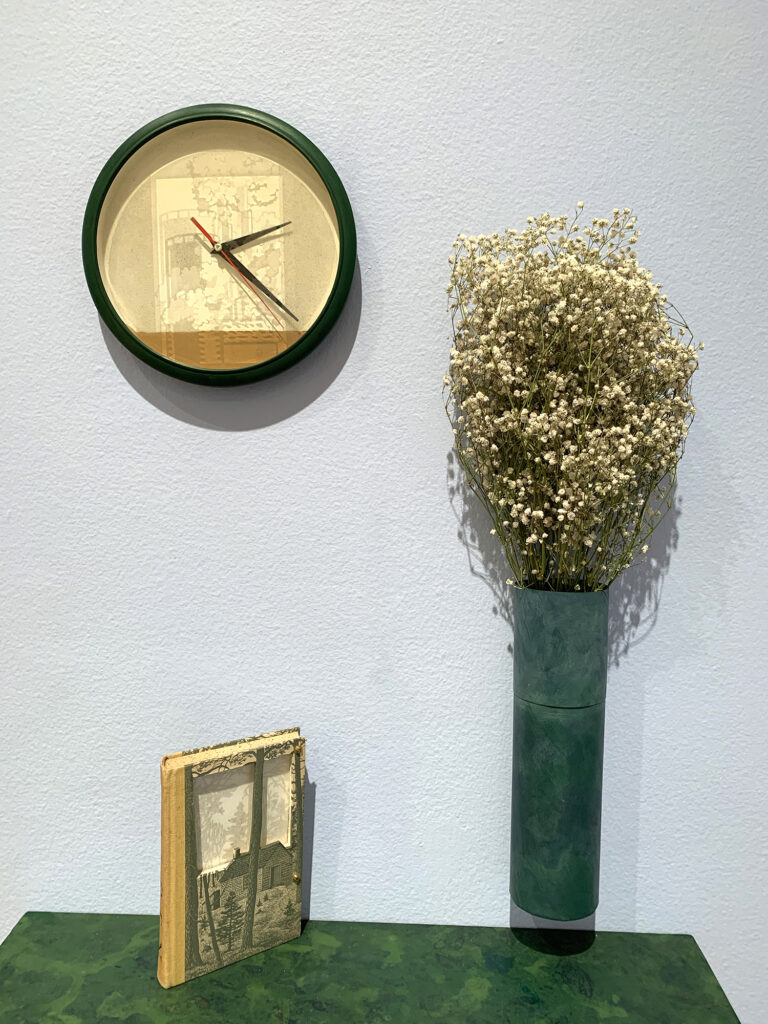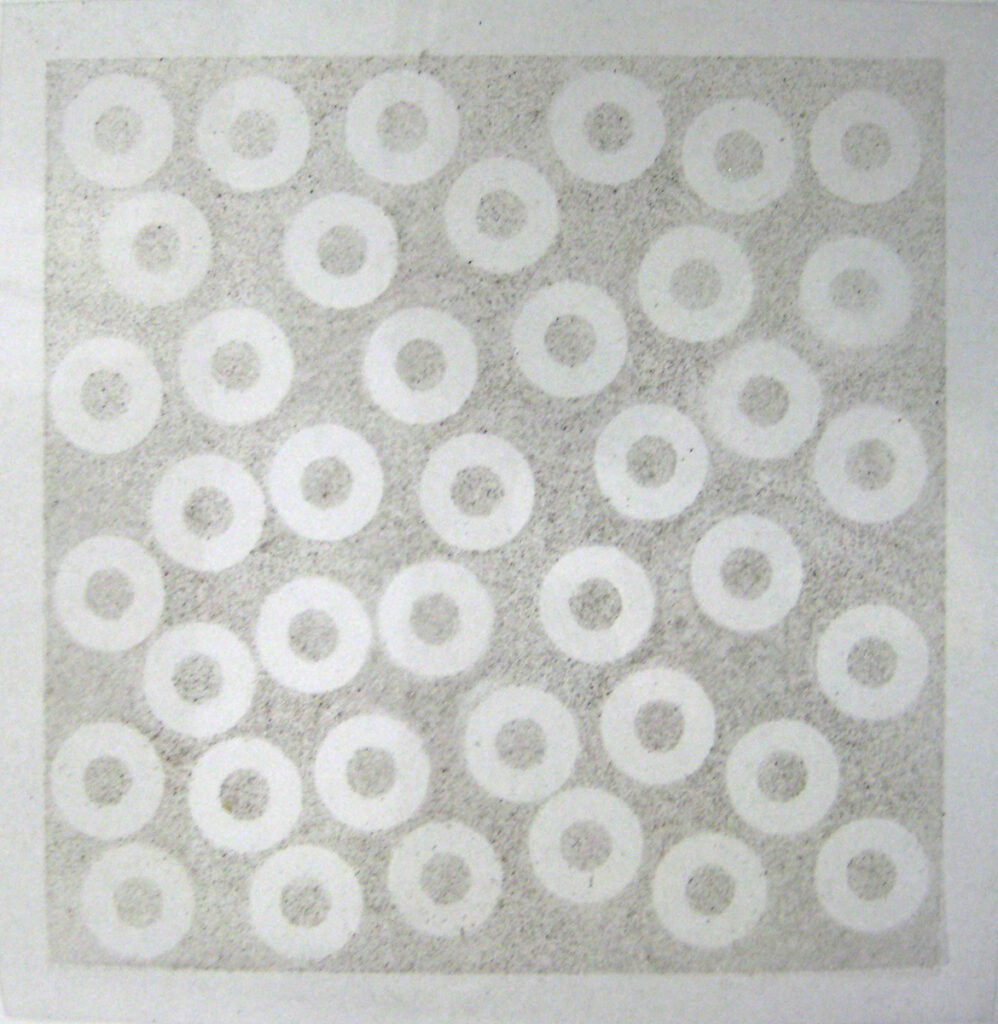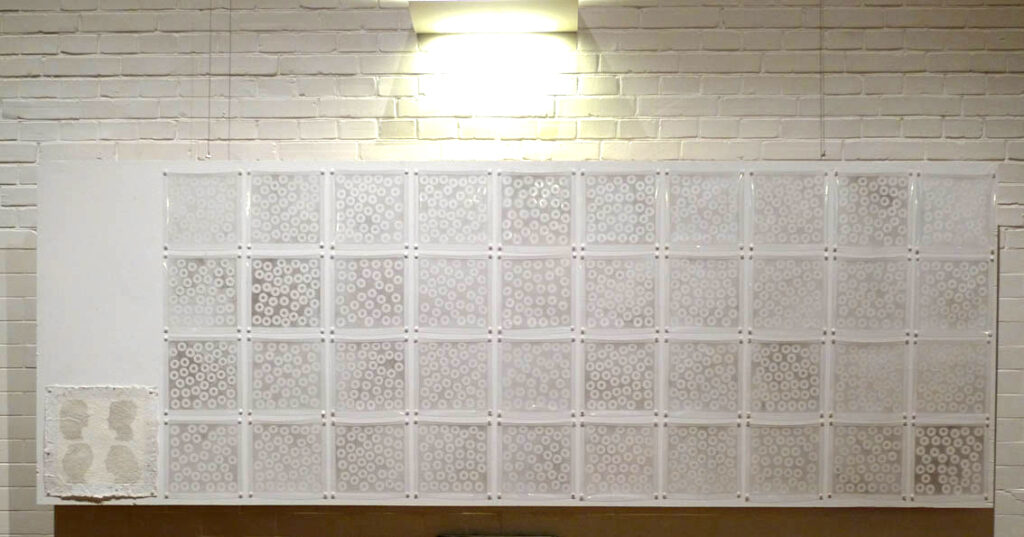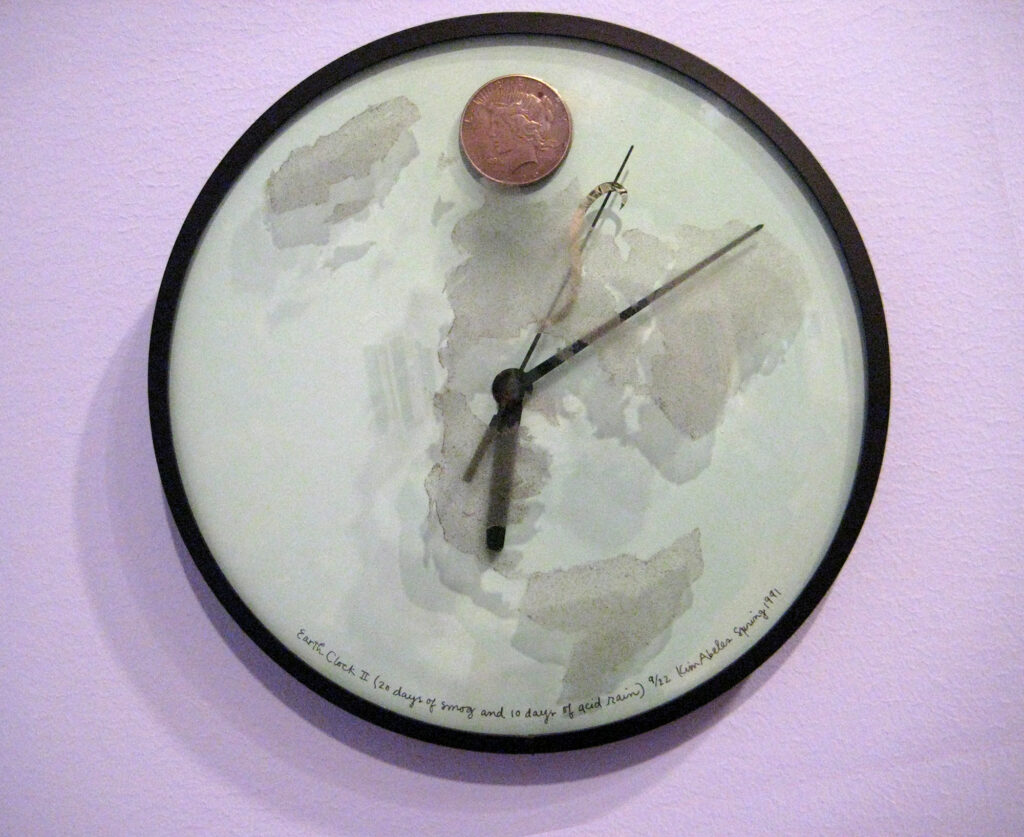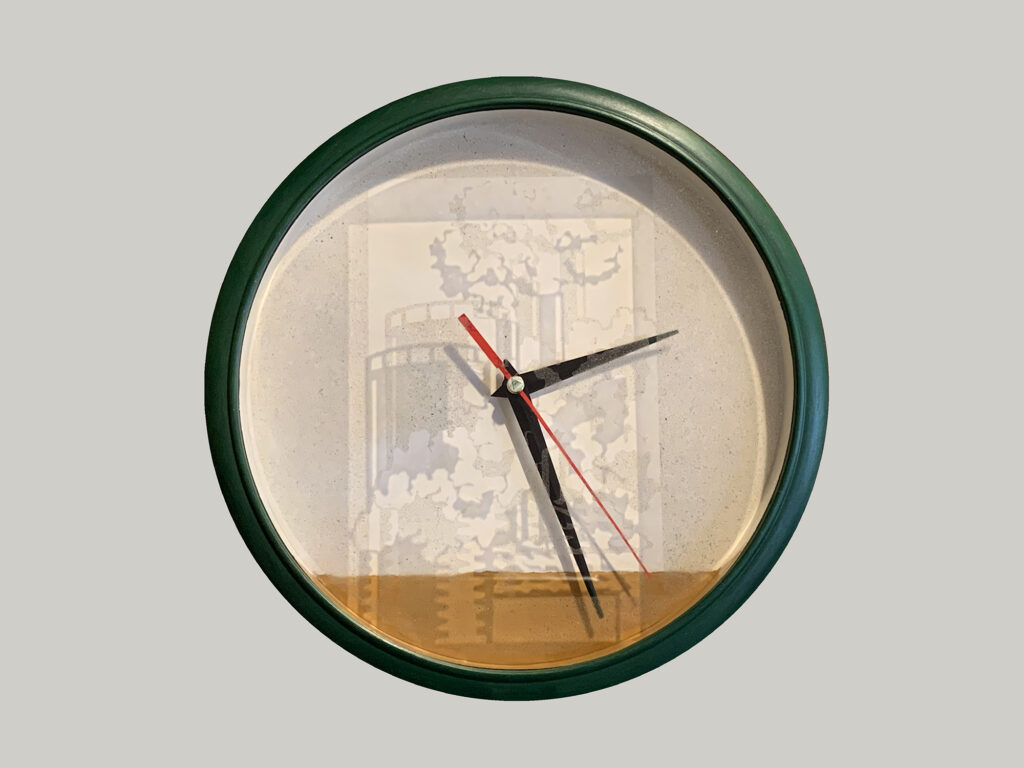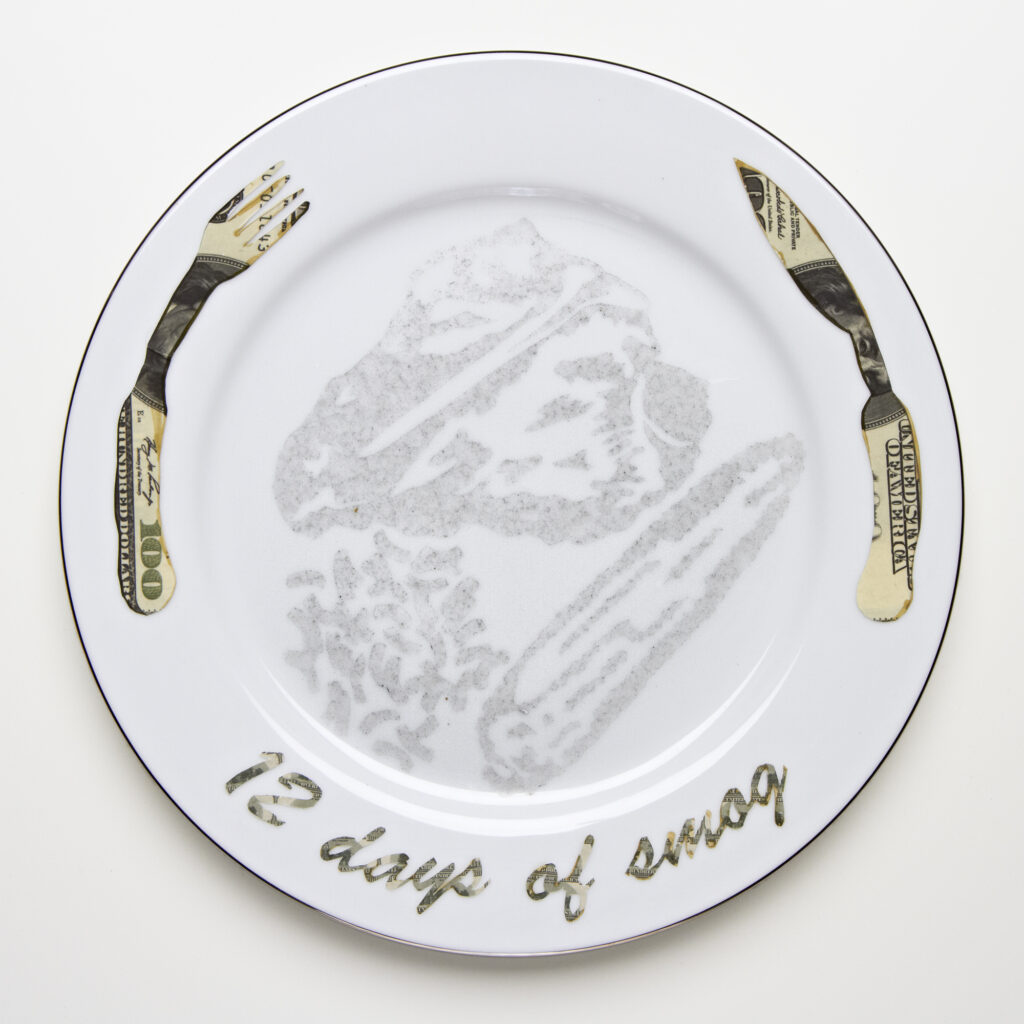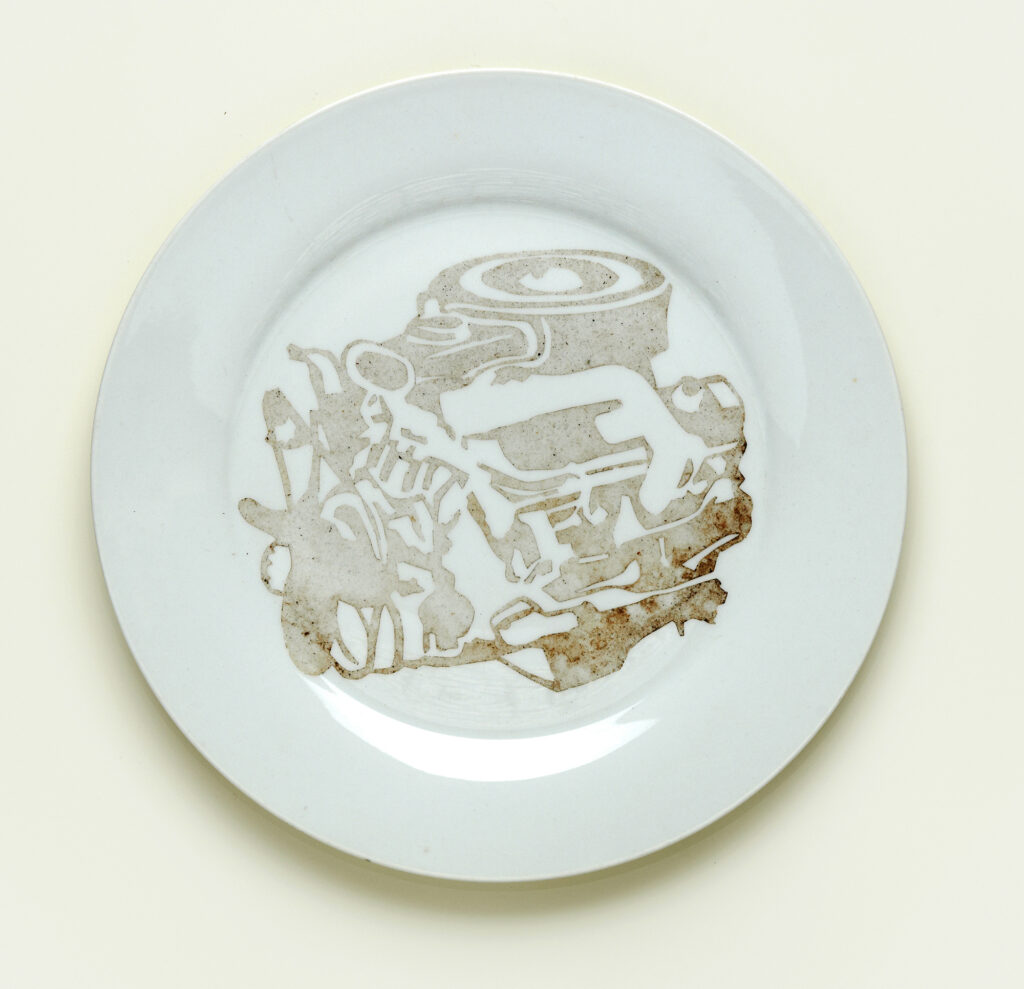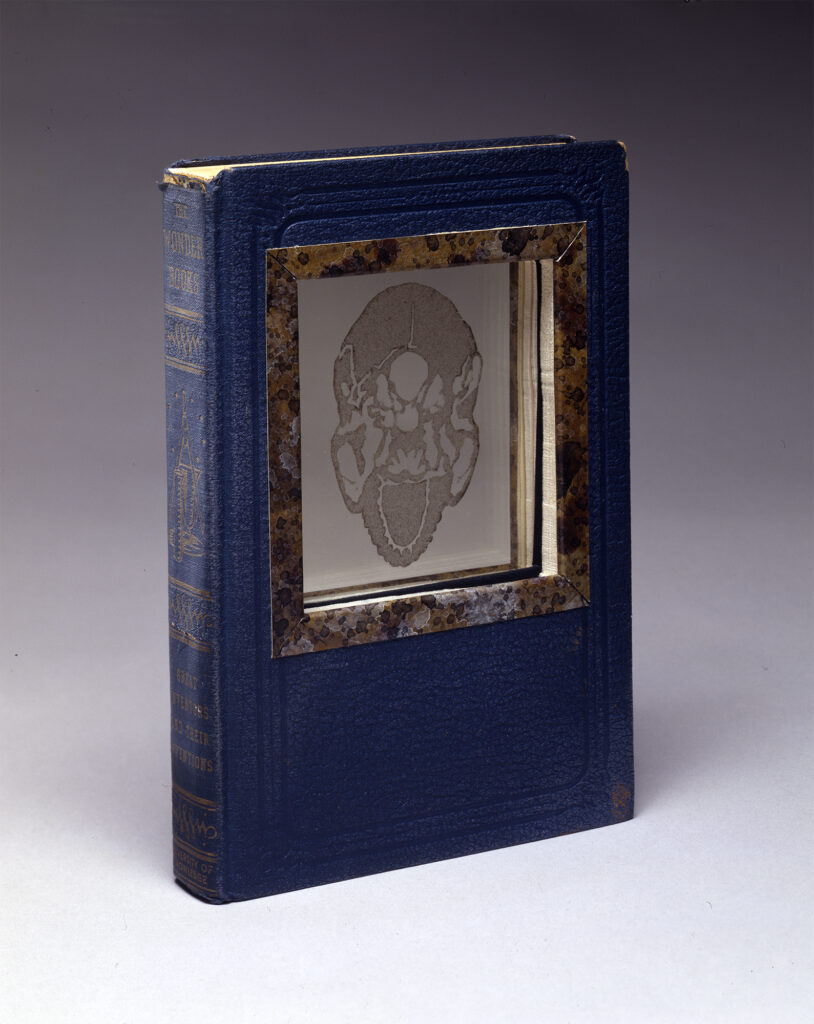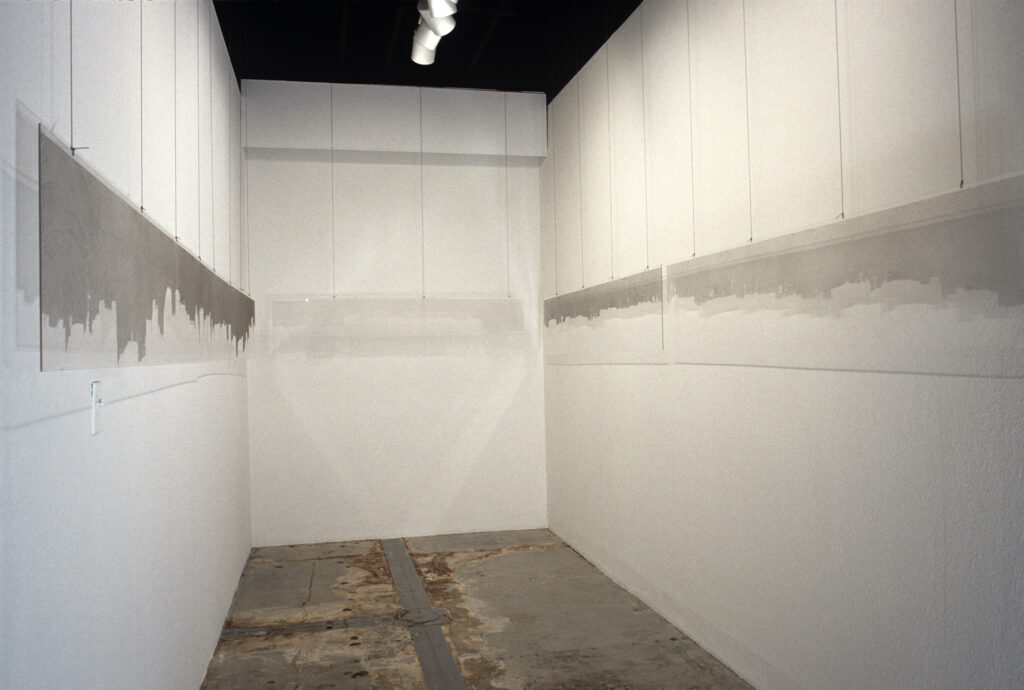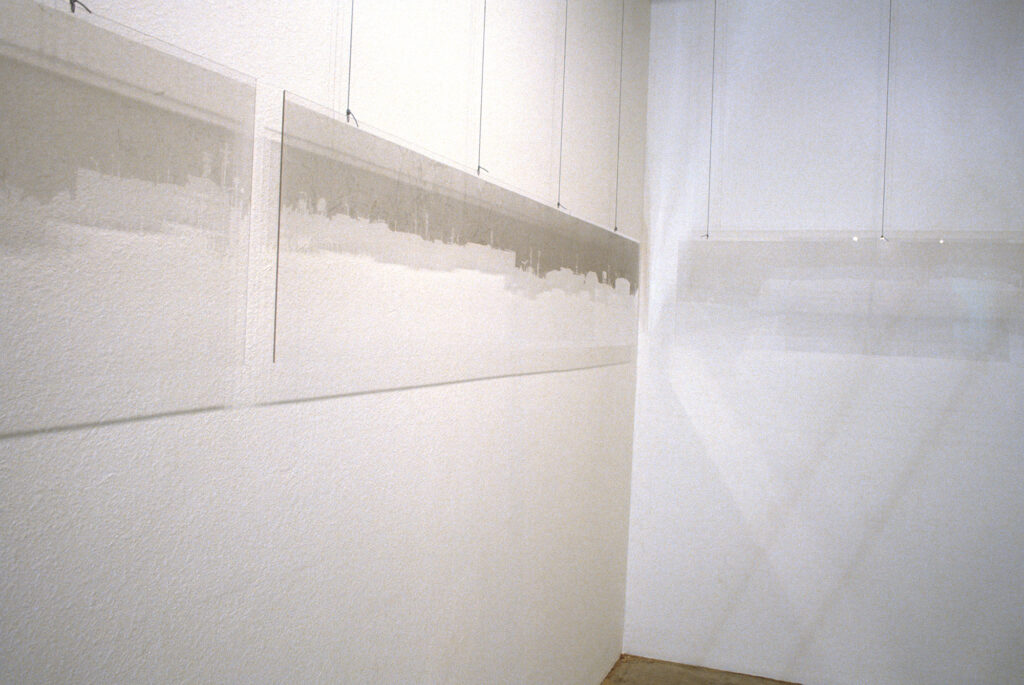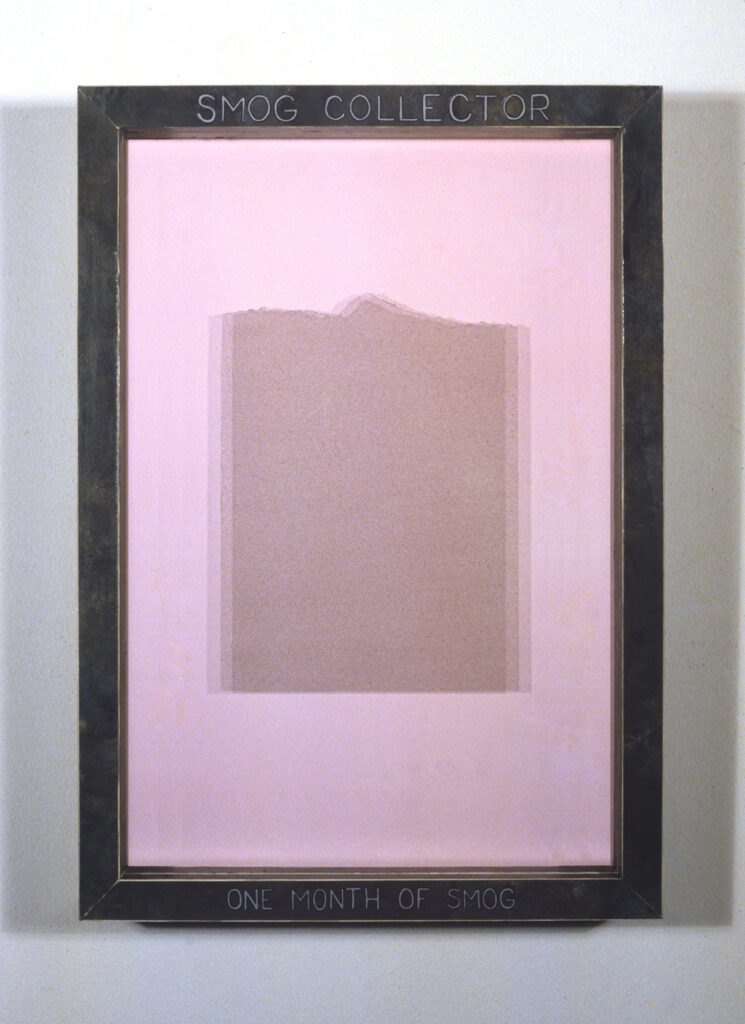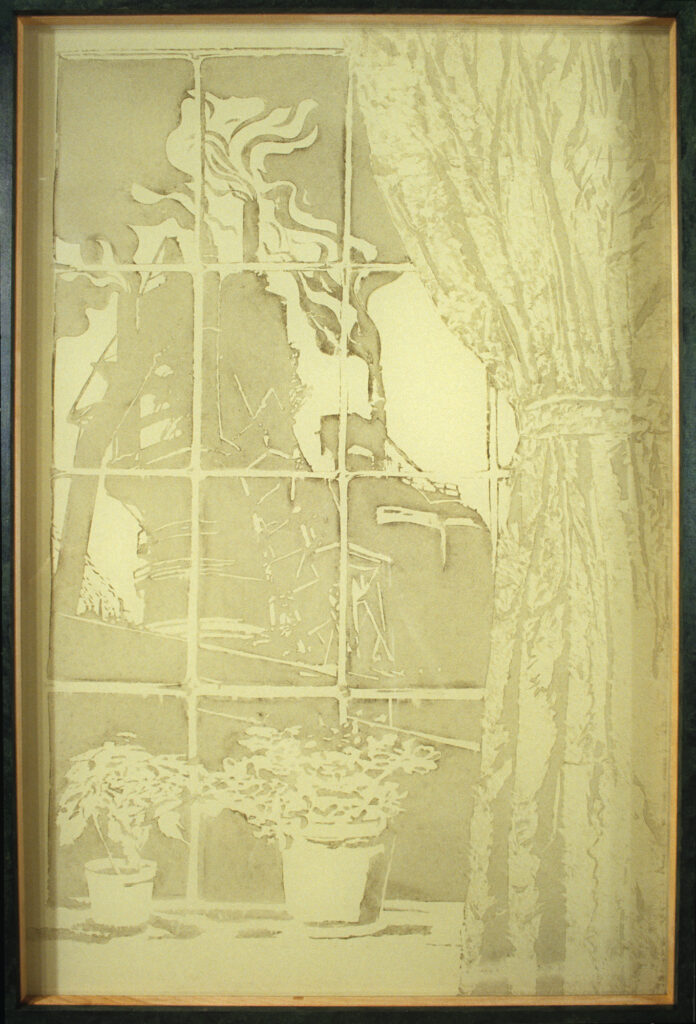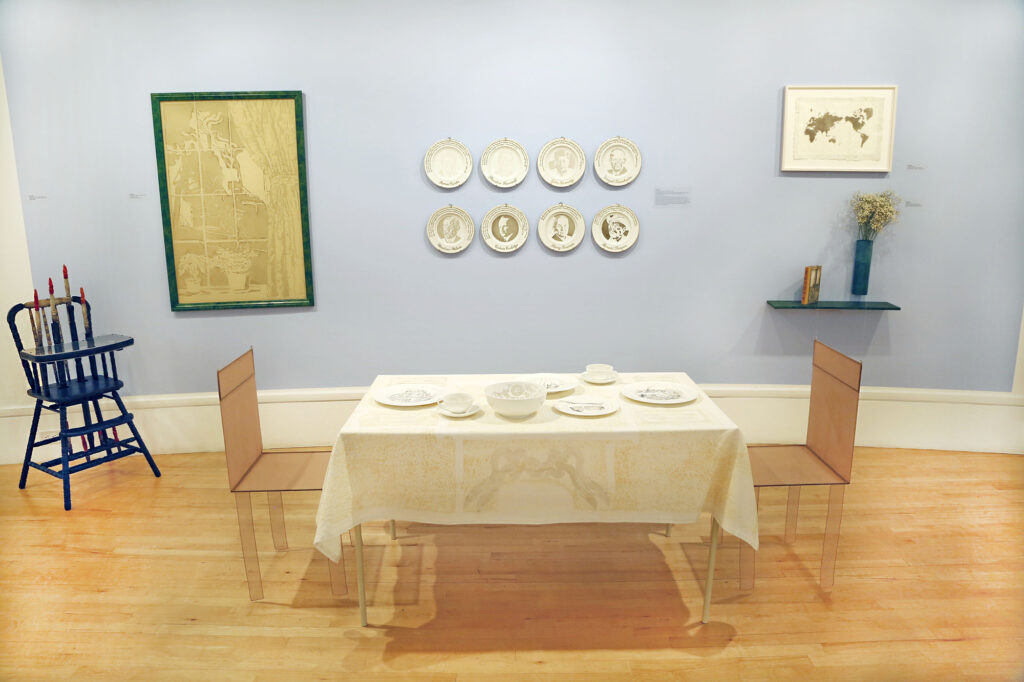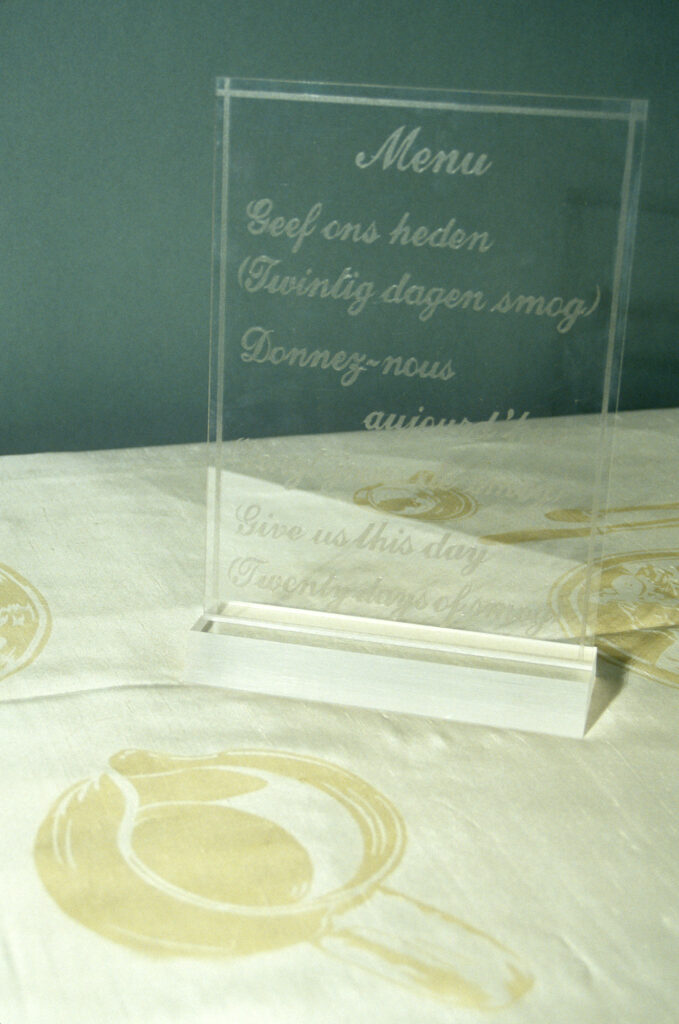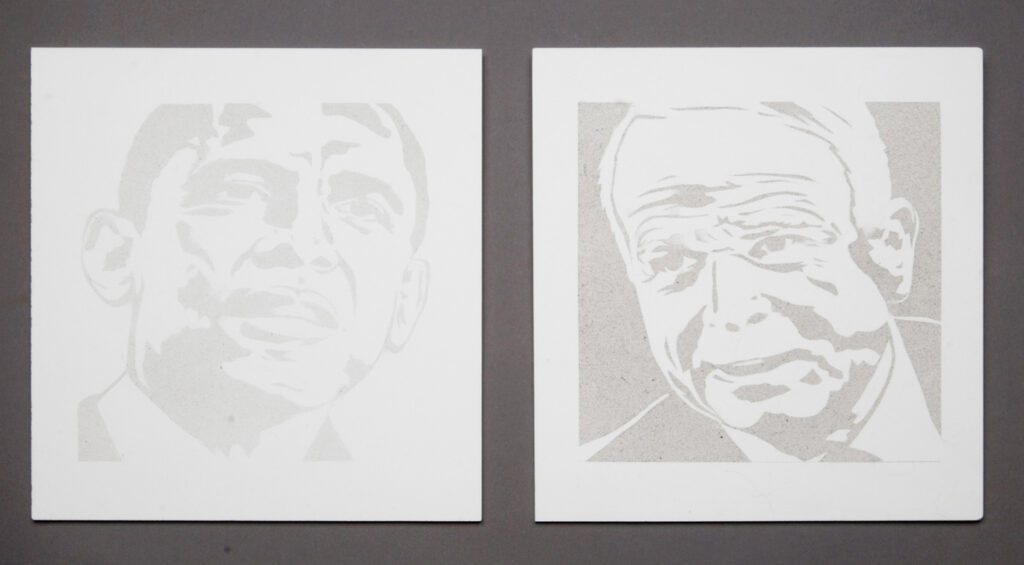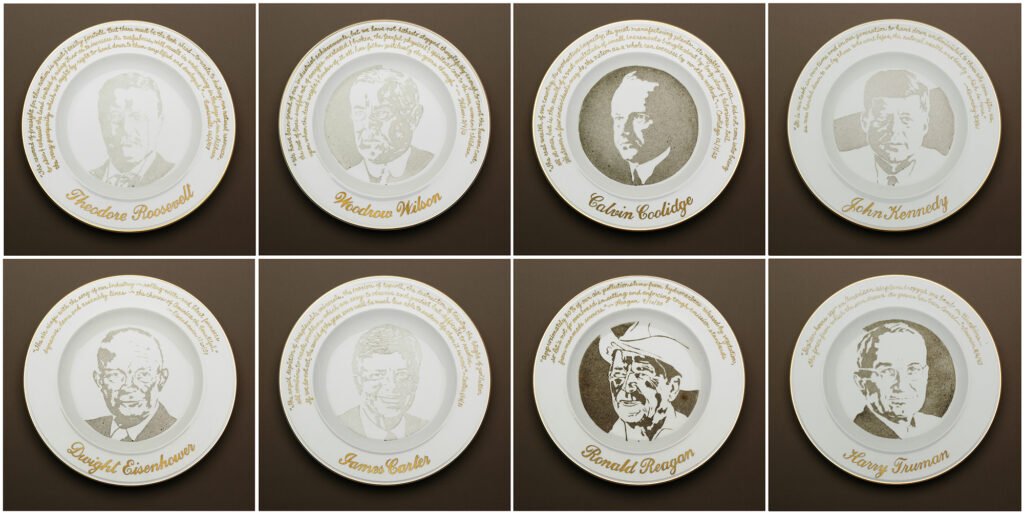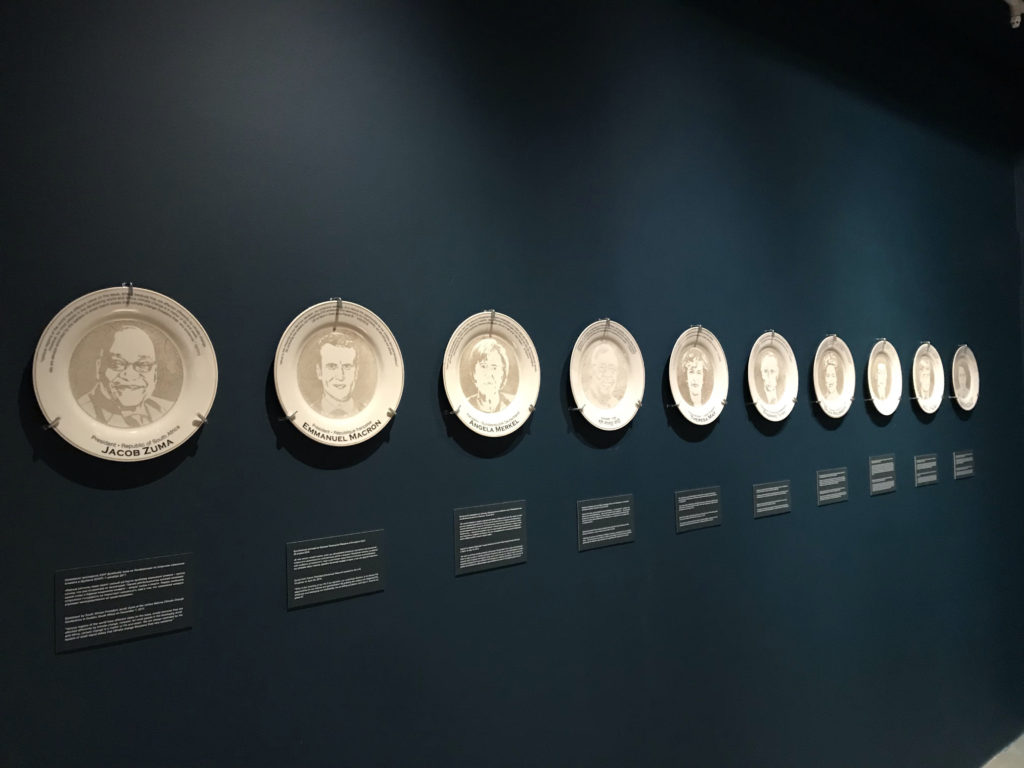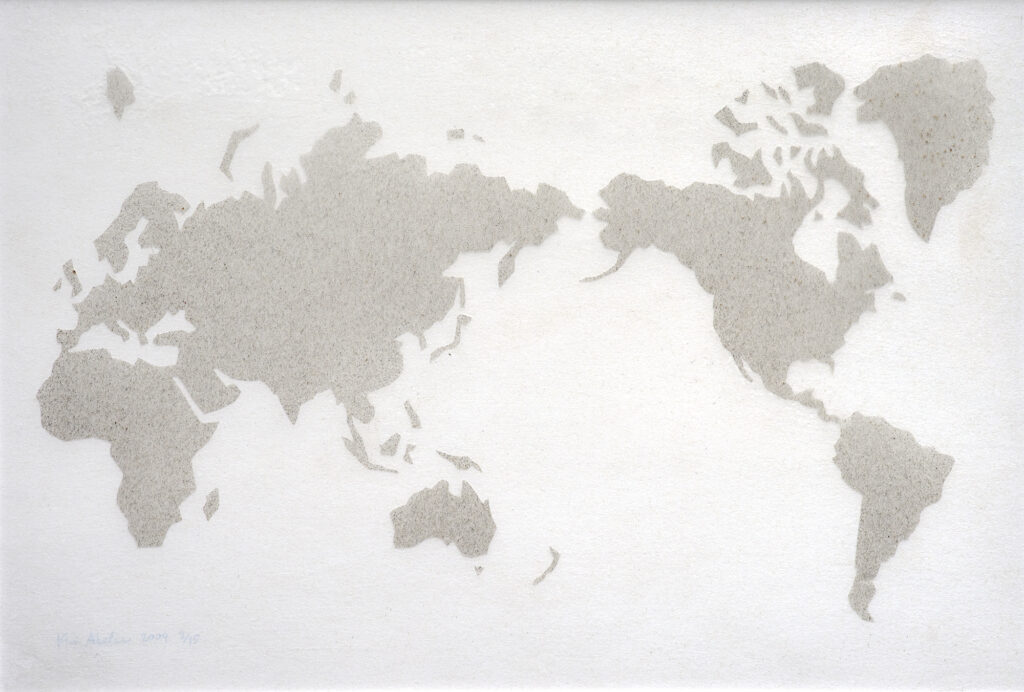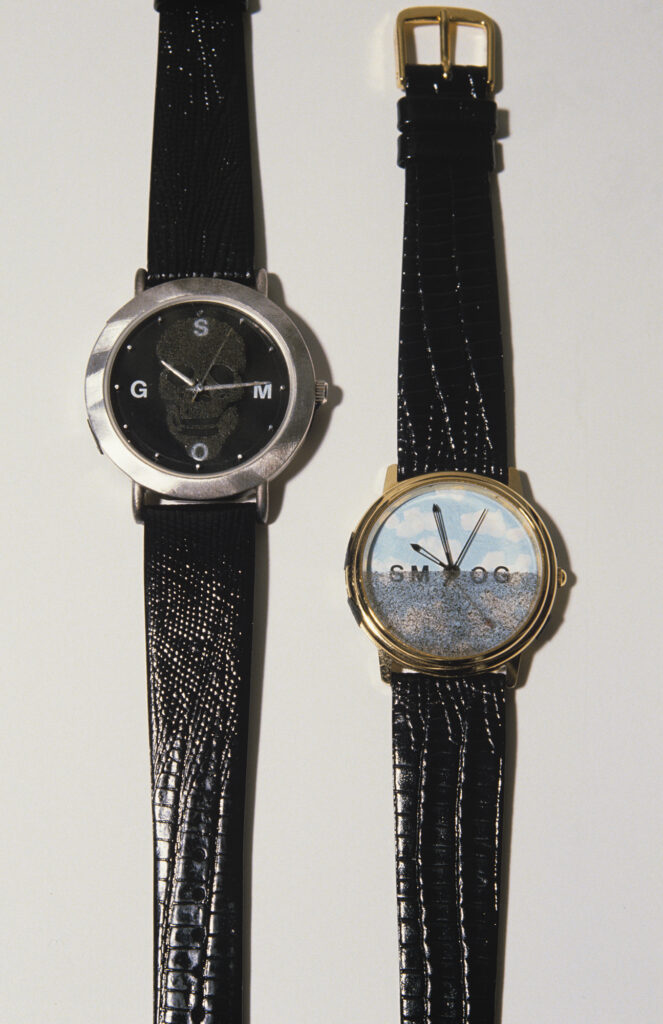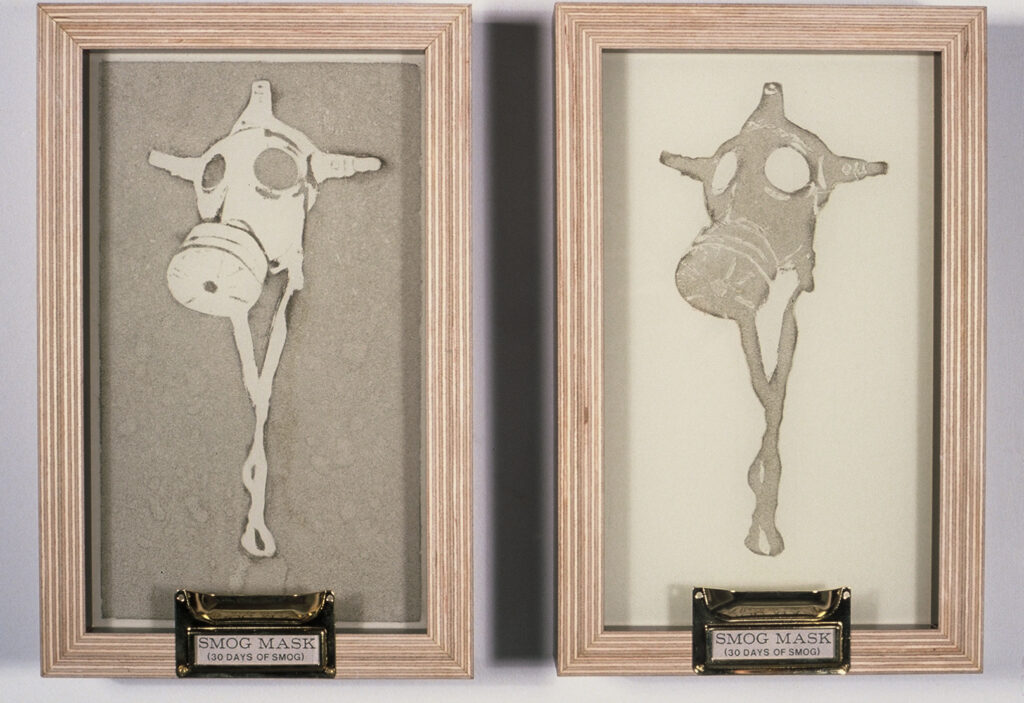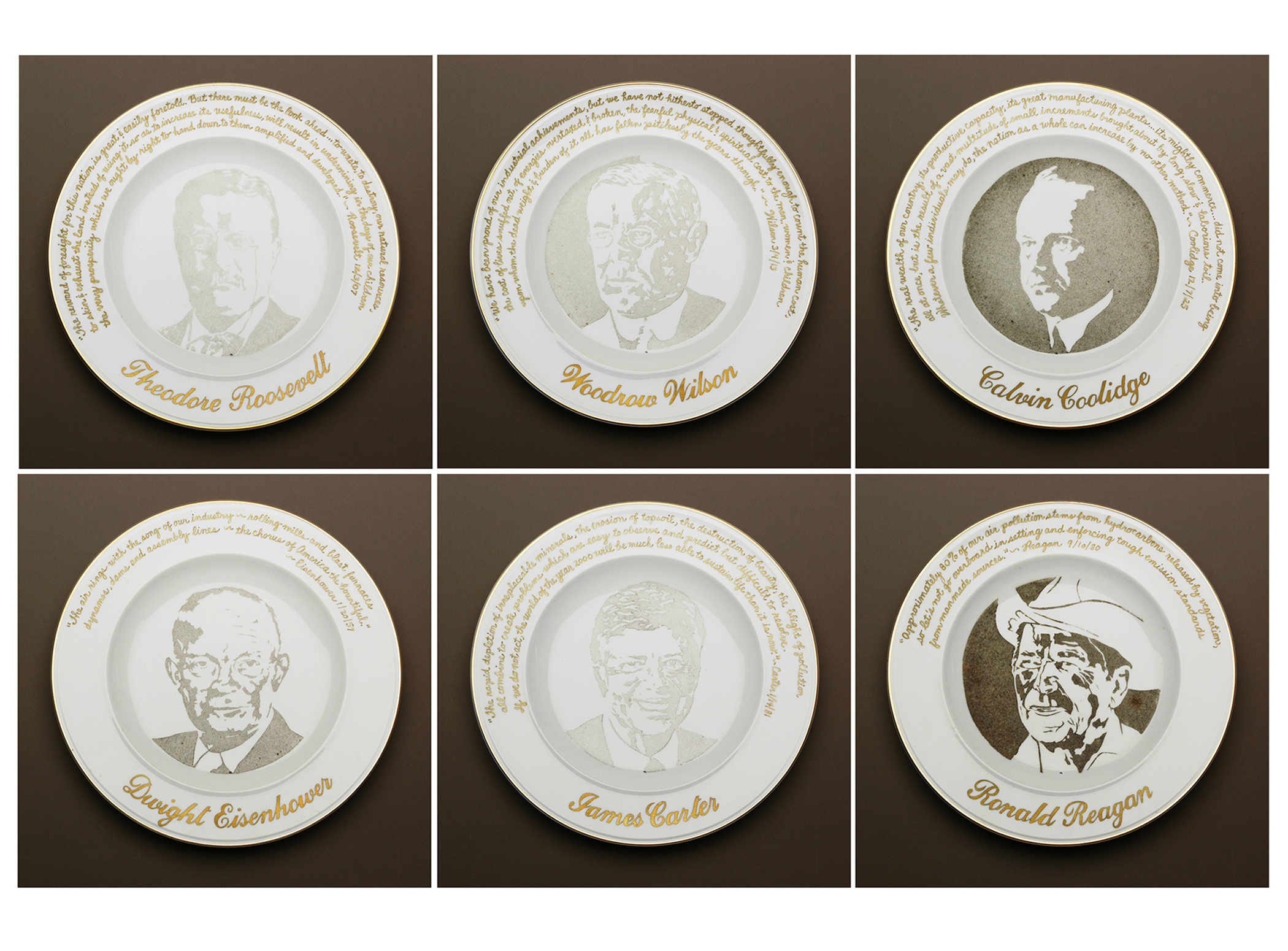
The London Globe printed a new word "Smog," coined in a speech at the 1905 Public Health Congress. They considered it a public service to describe this phenomenon.
The Smog Collectors materialize the reality of the air we breathe. I place cut, stencilled images on transparent or opaque plates or fabric, then leave these on the roof of my studio and let the particulate matter in the heavy air fall upon them. After a period of time, from four days to a month, the stencil is removed and the image is revealed in smog. To quote a stranger, they are "footprints of the sky".
I created the first smog Collector in 1987 while working on artworks about the "invisible" San Gabriel Mountains, obscured by the smog as I looked from my studio fire escape in downtown Los Angeles. In the 1980s it was common to hear people insist that it was fog, not smog, that filled the air.
The Smog Collectors are presented in several series, including the Presidential Commemorative Smog Plates, all the presidents from McKinley to Bush with their portraits in smog and their quotes about the environment or industry hand-painted in gold around the rims. I left them out on the roof longer, depending on their environmental records.
Subjects for the Smog Collectors include the cave paintings of Lascaux, images of the body, industry and to-scale translations of American landscape painting and photography. Domestic settings, such as Dinner for Two in One Month of Smog, have been important to the dialogue of these works. We live in the contradiction that the dangers are out there, beyond, and that we are safe in our homes. Since the worst in our air can't be seen, Smog Collectors are both literal and metaphoric depictions of the current conditions of our life source. They are reminders of our industrial decisions: the road we took that seemed so modern.
World Leaders in Smog (2019) created with smog (particulate matter), decal, porcelain
The new series of Smog Collectors, includes ten world leaders who presented speeches at world climate summits from 2011 to 2018. The quotes are written on the plates in the language originally presented. This project was created in collaboration with the exhibition, The Coming World: Ecology as the New Politics 2030–2100, curated by Snejana Krasteva and Ekaterina Lazareva for the Garage Museum of Contemporary Art, Moscow, Russia. The stenciled plates were also placed in the capitals of several of the leaders to collect their local smog: London, Washington DC, Berlin, Paris, Ottawa and Moscow.
Statement from the exhibition
Kim Abeles’ ongoing series Smog Collectors uses time and city smog to create images. Since 1987, the artist has been leaving objects partially covered with stencils in the open air. Over the course of a few days or weeks, smog particles from the polluted city air settle on the object in a dense layer and make the stenciled image visible. For the exhibition at Garage, Abeles used the smog in Moscow to produce several portraits of world leaders, featuring their quotes about the environment.
Smog Collectors make visible the air we breathe. Today the word “smog,” coined in 1905 in London from “smoke” and “fog,” refers to the global problem of air pollution in big cities, from London and Beijing to Los Angeles and Moscow. In 1992, Abeles exhibited a series of thirteen plates featuring smog portraits of American presidents and their quotes about the environment or industry. The length of each plate’s exposure to smog corresponded to the president’s environmental record. With her series for Garage, Abeles has taken her ecologically-engaged practice to the international level.
The new series, Smog Collectors, includes ten world leaders who presented speeches at climate summits from 2011 to 2018. Abeles used the official portraits from each government to create the stencils and the quotes are written on the plates in the language originally presented. In the exhibition, all the quotes are translated to be accessible for the viewer, but the language on the plates displays both the nationalism and the internationalism that is in critical conflict worldwide. Similarly, the toxic effect of pollution moves past geographic boundaries and political borders.
What is the promise of a leader’s vision when leaders come and go? Is there such a thing as an ethical stance when it comes to the survival of humans? We have only begun to accept the seriousness of the climate crisis resulting from our corporate, consumer, and energy decisions. Leaders make all types of statements, and we can surely see the irony in a quote that is not backed by policy and action.
The work is a sobering vision, an admission of guilt or responsibility, a call to action—the artist wants leaders to be accountable for their words.
